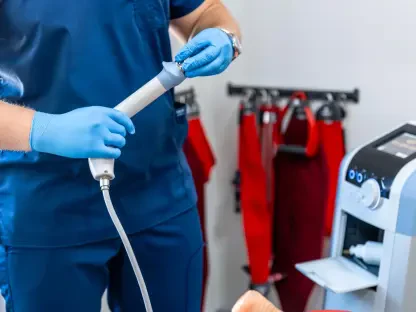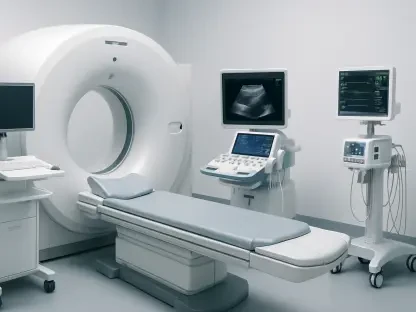In a world where healthcare disparities continue to widen the gap between affluent and resource-constrained regions, the challenge of equipping medical facilities in low- and middle-income countries (LMICs) with functional tools remains a pressing concern that demands urgent attention. Across the Global South, hospitals and clinics often grapple with outdated or broken medical equipment, struggling to provide even basic care due to systemic shortages. Donations from wealthier nations have long been seen as a potential lifeline, yet the reality on the ground paints a more complex picture. Far too often, well-intentioned contributions end up unused, gathering dust in storage rooms due to mismatched technology or lack of support. This issue not only wastes resources but also highlights a critical need for rethinking how such programs are designed and implemented. By delving into recent research and real-world insights, a clearer path emerges for ensuring that donated medical equipment delivers lasting impact rather than temporary relief.
Addressing Systemic Challenges in Equipment Donations
Barriers to Effective Utilization
The road to effective medical equipment donations in LMICs is fraught with obstacles that go beyond mere availability. A significant barrier lies in the incompatibility of donated devices with local conditions, where infrastructure, power supply, and technical expertise often differ vastly from the settings for which the equipment was originally designed. Machines built for high-resource environments frequently break down in harsher climates or fail due to unstable electricity, rendering them useless without costly adaptations. Moreover, the absence of spare parts in recipient countries exacerbates the problem, as repairs become nearly impossible without access to specific components. Research reveals that a staggering number of devices remain idle in hospitals across the Global South, not because of a lack of need, but due to these fundamental mismatches. This situation underscores the urgency of aligning donations with the realities of local healthcare systems to prevent resources from being squandered.
Lack of Training and Maintenance Support
Another critical hurdle in the utilization of donated medical equipment is the gap in training and ongoing maintenance. Even when devices arrive in working condition, local healthcare staff often lack the specialized knowledge required to operate or repair complex machinery. Without proper instruction, equipment can quickly fall into disuse, negating the benefits of the donation. Additionally, the absence of established maintenance systems means that minor issues can escalate into permanent breakdowns, as there are few technicians or resources available to address them. Field observations from hospitals in regions like Uganda have shown that many devices could be salvaged with basic training and access to repair tools, yet such support remains scarce. Addressing this gap calls for a shift in focus from simply delivering equipment to building capacity among local teams, ensuring that donations are accompanied by comprehensive education and technical assistance for sustainable use.
Building Sustainable Frameworks for Future Donations
Context-Aware Design and Collaboration
To transform the landscape of medical equipment donations, a fundamental shift toward context-aware design is essential. Equipment must be tailored or selected with the specific needs and constraints of recipient regions in mind, taking into account factors like environmental conditions and available infrastructure. For instance, devices that can withstand power fluctuations or operate in high-humidity settings are far more likely to remain functional in LMICs. Equally important is fostering collaboration between donors and recipients to ensure that donations align with local priorities rather than external assumptions. Partnerships that involve consultation with healthcare providers on the ground can help identify the most pressing needs and suitable technologies. By prioritizing such cooperative approaches, the risk of delivering irrelevant or unsustainable equipment diminishes, paving the way for donations that offer genuine, long-term value to struggling healthcare systems.
Strengthening Local Capacity and Environmental Responsibility
Beyond design considerations, building local capacity stands as a cornerstone of sustainable donation practices. Providing comprehensive training programs for healthcare workers and technicians ensures that donated equipment can be operated and maintained effectively over time. Establishing local repair networks and supply chains for spare parts further reduces dependency on external support, empowering communities to manage their resources independently. Simultaneously, the environmental impact of donation programs must be addressed, as shipping equipment across continents often carries a significant carbon footprint. Strategies to minimize waste, such as recycling unusable devices or optimizing transport logistics, are critical to aligning healthcare aid with global sustainability goals. By integrating these elements into donation frameworks, the focus shifts from short-term fixes to creating resilient systems that benefit both people and the planet in the long run.
Reflecting on Past Efforts and Future Directions
Lessons Learned from Previous Initiatives
Looking back at earlier efforts to support healthcare in the Global South through equipment donations, it becomes evident that goodwill alone is insufficient to address deep-rooted challenges. Many initiatives stumbled due to a lack of foresight regarding local conditions, resulting in warehouses full of unusable devices that burdened rather than aided facilities. The high rate of equipment downtime, often due to missing spare parts or inadequate training, revealed a disconnect between donor intentions and recipient realities. Fieldwork in regions like Uganda demonstrated that even small investments in repairs could yield significant savings, yet such opportunities were frequently missed. These experiences highlight the need for a more strategic approach, where every donation is planned with an eye toward compatibility and sustainability, ensuring that resources are utilized rather than wasted.
Charting a Path Forward with Actionable Solutions
As past challenges come to light, a renewed emphasis on actionable solutions emerges to guide future endeavors. Developing guiding principles that prioritize context-specific equipment, robust training, and strong maintenance systems proves essential for lasting impact. Encouraging donors to collaborate closely with local stakeholders ensures that needs are accurately assessed and met. Additionally, integrating environmental considerations into planning helps reduce the ecological toll of international shipments. Moving forward, policymakers and healthcare organizations should focus on scaling these best practices, investing in partnerships that empower LMICs to maintain and innovate with donated resources. By committing to these strategies, the global community can transform medical equipment donations into a powerful tool for equity, ensuring that every contribution builds stronger, more resilient healthcare systems for those who need them most.









